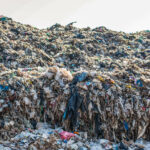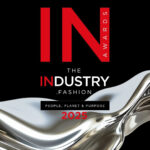How can fashion be redesigned for a circular economy?

TheIndustry.fashion hears from circular economy charity the Ellen MacArthur Foundation on how fashion can fix its overproduction and overconsumption problem.
For an industry not famed for its comedians (ever seen the uniform facial expression of a fashion week FROW?), fashion is a funny one.
Trends would not be trends without retrospection; design cannot function without the ability to take stock. For a sector so reliant on the old, why can we not shake off our need for the new?
Fortunately, the Ellen MacArthur Foundation is working on it. The charity, founded in 2010 with the mission to accelerate the transition to the circular economy, is championing a circular fashion industry that enables products to be used more, made to be made again and made from safe and recycled or renewable inputs.
In May, it launched The Fashion ReModel, a project laser focused on decoupling revenue from the production of new garments, and joined by global brands including Arc’teryx, Primark and Zalando.
The fashion industry currently operates under a take-make-waste model, meaning that millions of tonnes of clothes are produced, worn, and thrown away. Every second, the equivalent of a lorry load of clothes is burnt or buried in landfill, and according to Business Waste Management, 92 million tonnes of textile waste is produced globally every year.
In other words, the fashion industry must reinvent this linear system and transform the way we design, make, and enjoy our clothes.
Currently, four primary customer-facing business models help keep products in circulation within the economy and offer the potential to separate revenue generation from production and resource consumption: repair, rental, resale, and remaking.
By remodelling the system, the Foundation aims to create a more resilient fashion industry where businesses diversify their income streams and build stronger connections with customers, and policymakers can create supportive conditions for circular business models to flourish.
“We are living through an era of incredible change in the fashion industry where the power of creatives is meshing with the drive for circular economy,” says Jules Lennon, Fashion Initiative Lead at the Foundation. “The transition to a circular fashion industry is fundamentally reshaping products and the way brands design their business strategies. The time is now for brands to use their influence to bring circular business models into the mainstream and establish a new normal for fashion.”
Paving the way for The Fashion Remodel was another Foundation demonstration project, The Jeans Redesign, which encouraged the creation of denim that is fit for a circular economy and designed for longevity, disassembly, and minimal waste.
Over 100 brands, retailers and garment manufacturers, including Chloé, Ganni and Reformation, across 25 countries took part in the project, finding solutions to put the circular economy into action and create a world where clothes are kept in use.
In 2023, Weekday, part of the H&M Group, produced 40% of its jeans portfolio to meet The Jeans Redesign’s guidelines. Via the project, the brand deepened its knowledge of fabric strength and washes, as well as how to improve durability and colour fastness.
“The Jeans Redesign project guided us in the next important step, to prepare our jeans for a circular life. It started as a small capsule in 2021,” says Weekday’s Sustainability Lead Ulrika Jakobsson. “We see the work towards circular denims as a continuous process and are constantly searching for better alternatives to improve.”
Since then, the ambition has grown from not only redesigning the products of the future, but to transforming the systems that deliver them and keep them in use – such as circular business models.
According to the Ellen MacArthur Foundation, these business models, which include resale, rental, repairs and remaking, can provide considerable greenhouse gas savings, and could be worth USD 700 billion by 2030, making up 23% of the global fashion market.
By establishing the need to decouple revenue from production and resource use through a circular economy, the Foundation hopes to highlight the opportunities that exist and encourage further ambitious and transformative action.
The Foundation aims to make circular business models essential, accessible, and enjoyable. However, the shift to circular cannot be achieved by business-led action alone. The Foundation is therefore calling for mandatory Extended Producer Responsibility (EPR) policy for textiles as a necessary part of the solution for a circular economy for textiles.
EPR policies assign producers the responsibility for the collection, sorting, and recirculation of their products once they are discarded by consumers. When effectively designed, EPR policies can greatly enhance the cost-revenue balance for the separate collection, sorting, reuse, repair, and recycling of discarded textiles.
Additionally, EPR policies provide transparency and traceability in global material flows, while also encouraging capital investments in the infrastructure necessary for large-scale reuse and recycling.
The fashion industry is rooted in reinvention, with the power to shape desire, trends and culture. By harnessing the industry’s innovative and creative potential and changing how it makes money, the sector can accelerate a new way of doing business in fashion.
In proud partnership with:








